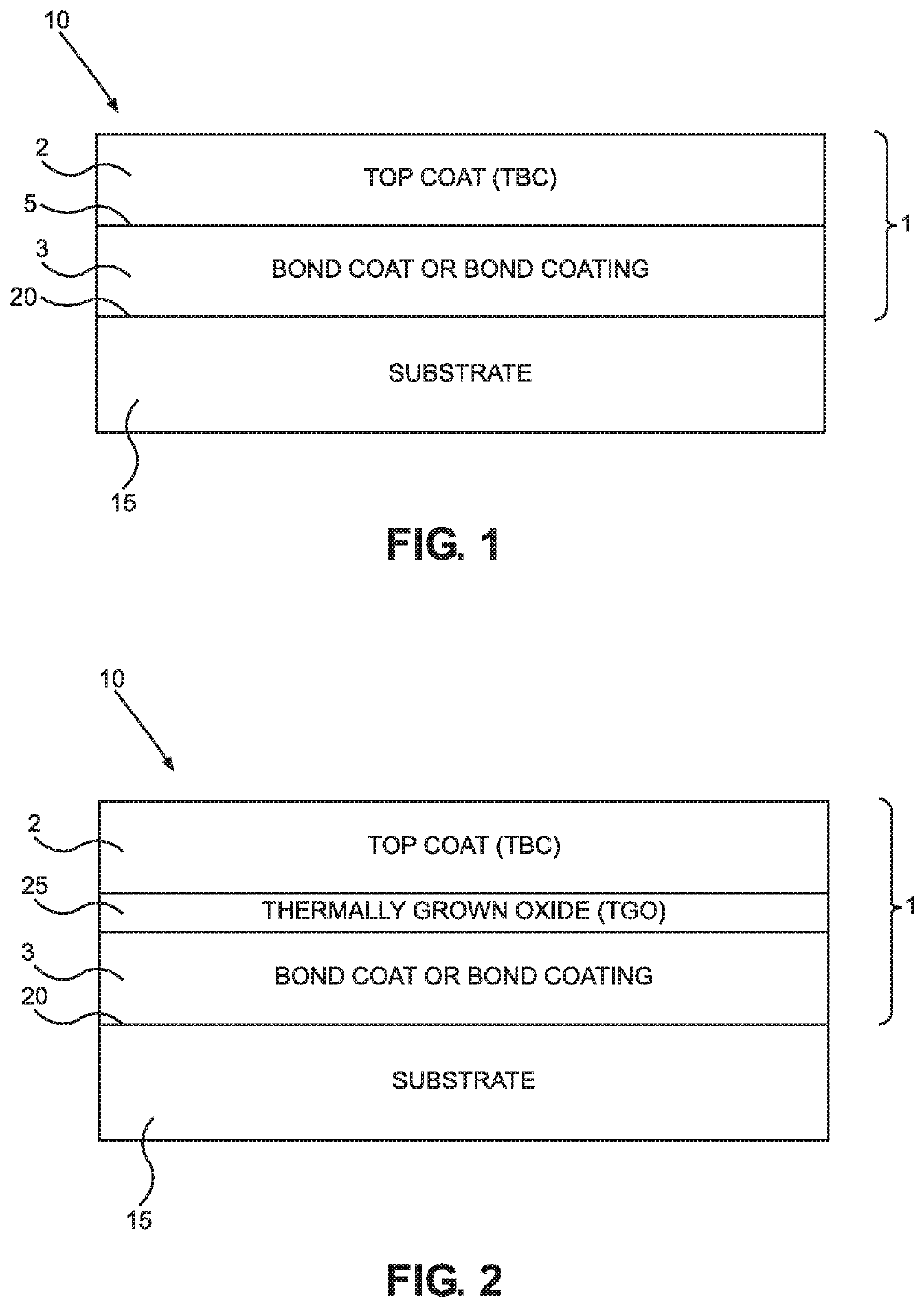Advanced bond coat materials for tbc with improved thermal cyclic fatigue and sulfidation resistance
a technology of thermal cyclic fatigue and bond coat materials, which is applied in the direction of metallic material coating process, machine/engine, blade accessories, etc., can solve the problems of significant differences in thermal expansion coefficients of bond coat, tbc can be degraded, and the failure of a complete tbc system, so as to prevent oxidation of the substrate, reduce delamination, and reduce the delamination
- Summary
- Abstract
- Description
- Claims
- Application Information
AI Technical Summary
Benefits of technology
Problems solved by technology
Method used
Image
Examples
examples
[0064]The compositions of three nickel-based alloy samples of the present invention and a comparative or base-line cobalt-based alloy sample Diamalloy® 4700 (bond coating materials) used to make a bond coat for a coated substrate are shown in Table 1. The materials listed in Table 1 are sprayed by the high velocity oxy-fuel spray process (HVOF process) on Hastelloy X substrates to form four different bond coats. Hastelloy® X, as disclosed by Wolfa et al, has a nominal composition of 22.0 wt. % chromium; 9.0 wt. % molybdenum, 18.5 wt % iron; 1.5 wt. % cobalt; 0.6 wt. % tungsten, 1.0 wt % silicon, 1.0 wt. % manganese, 0.1 wt. % carbon, and the balance nickel. Then, an identical top coat (TBC) of 7 wt. % Y2O3 partially stabilized ZrO2 (Amdry® 204NS-1, made by Oerlikon Metco) is air plasma sprayed onto the bond coats to form four different TBC systems, named as Comparative TBC-D4700, and TBC Example 1, TBC Example 2, and TBC Example 3.
[0065]A FCT (Furnace Cyclic Test) for performance ra...
PUM
| Property | Measurement | Unit |
|---|---|---|
| Fraction | aaaaa | aaaaa |
| Fraction | aaaaa | aaaaa |
| Fraction | aaaaa | aaaaa |
Abstract
Description
Claims
Application Information
 Login to View More
Login to View More - R&D
- Intellectual Property
- Life Sciences
- Materials
- Tech Scout
- Unparalleled Data Quality
- Higher Quality Content
- 60% Fewer Hallucinations
Browse by: Latest US Patents, China's latest patents, Technical Efficacy Thesaurus, Application Domain, Technology Topic, Popular Technical Reports.
© 2025 PatSnap. All rights reserved.Legal|Privacy policy|Modern Slavery Act Transparency Statement|Sitemap|About US| Contact US: help@patsnap.com

